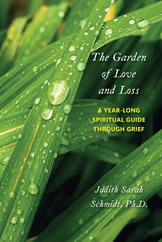Attachment Theory
Learned security is a learning process that involves two individuals. It results from the client’s conscious effort, which includes being in the therapeutic relationship for three years or more. It is collaborative and co-constructive. The therapist must “model a relationship where she is utterly dependable, reliable, consistent, honest, open minded, and empathic”; she must be attuned to the client, present, not pre-occupied. Her work is to help the client gain emotional autonomy, to repair therapeutic ruptures, and to help clients get to know themselves.
The Practice of Embodying Emotions: A Guide to Improving Cognitive, Emotional, and Behavioral Outcomes
This morning I felt a connective epiphany, a strong resonance, while reading Raja Selvam’s new book, The Practice of Embodying Emotions, chapter 9 specifically, I felt like someone in the driver’s seat actually knew where he was going, directed by an intuitive GPS taking him and me to an emotional place that made sense: sensorimotor emotions. I offer my review of his book in hopes it might shed light on clients you are working with or perhaps something within yourself as well.
Therapy with a Coaching Edge
Lynn Grodzki’s new book, Therapy with a Coaching Edge, guides professionals who are interested in a model of therapy that incorporates a coaching approach. She begins with a description of the basic model, which is comparable to a combination of traditional psychotherapy and life coaching. She then explores a set of nine specific coaching skills, including asking motivating questions and being more reactive. Grodzki has designed the book to be flexible and suitable for people with varying interests so that professionals can either adopt the complete model or select the concepts and skills that appeal to them the most.
When Hurt Remains
Book offers personal stories about professional moments of failure. Fifteen psychotherapists define failure from their own perspective and courageously revisit client cases, some that occurred many years ago, to share intimate and revealing vignettes where the therapeutic bond was disrupted, where they were deeply wounded, and for some those wounds changed the course of their career. For all, these wounds remain as a tear in the fabric of their being.
BOOK REVIEW – The Little Book of Being
Winston’s new guide offers helpful advice for both novice meditators and experienced meditators looking to improve their practice. The concept of "natural awareness" can seem vague at times, and Winston repeatedly defines it throughout the book. However, her “glimpse” exercises and anecdotes help the guide feel more engaging and the concept of natural awareness to feel more accessible.
Origins
Somatic Movement Educator who has read many books by authors in the field, I felt a quickening and rising in my body and became curious, shyly excited, and a little nervous when invited to review a book by Joan Davis. Davis is among a generation of creative professionals in Ireland and across the UK dedicated their lives to in-depth explorations and research through the silent level (non-words) processes and expressions of the human body. In this very small, yet internationally growing world of somatic movement, Davis is among the “rock stars”, and she has rightfully earned her honor and fame through decades of creative, intellectual, emotional, and spiritual research that she integrated into a training programme called Origins.
Everyday Evils: A Psychoanalytic View of Evil and Morality
Everyday Evils is fascinating for its breadth of analysis across several different schools of thought in psychology and for the grasp of understanding of history, ethics, and the intersections of various fields of study.
Humanual: A manual for being human: An Epic Journey to your expanded self
There are numerous themes woven in the three parts of this text that bring readers into and through a journey that if taken with intention and reflection, has the potential to result in significant changes. I appreciated Betsy's inclusion of joy, laughter, and play and how swaying, rocking, rolling, and bouncing all invite aliveness into our body. A question she offered, stays with me: “Is this contributing to my health and well-being, and a fuller version of myself or not?” (pg. 215). I take a moment to reflect before making a choice. Being in the moment, conscious.
Self Help Books: A Genre Unto Themselves
by Nancy Eichhorn
I’m a self-help junkie. I know, the word junkie might connote that I still need help, but the reality is I’ve read...
Anna Halprin: Dance, Process, Form
Anna Halprin: Dance, Process, Form details the life and work of dancer and artist Anna Halprin. Halprin was an early innovator in dance therapy, using the medium as a form of personal exploration through artistic and physical expression. Her work with groups of people, either for specific art pieces or in experimental workshops, was highly influential for the development of both dance therapy and avant-garde expressionism.














